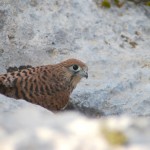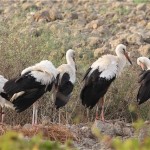BirdLife Malta has confirmed that a family of common kestrels (spanjulett) have bred in Gozo this year and has released footage of the 3 chicks, the first to hatch in Malta in 4 years.
The nest, the location of which was kept secret, was discovered by a local resident in Gozo who became aware of the adult birds flying around the area. The resident alerted BirdLife Malta, whose ornithologists then checked and confirmed that the kestrels were in fact breeding.
The nest was then watched over and the resident was able to film the kestrel family; following the parents as they delivered food to their newly hatched young, and watching the chicks grow and take their first shaky flights away from the nest. After building up their confidence at flying, the young kestrels left the nest on 2nd August.
Nicholas Barbara, BirdLife Malta Conservation Manager, said “We are very happy to confirm that common kestrels have raised chicks in Gozo this summer, the first time in 4 years. The sporadic attempts for common kestrels to breed in Malta over the past years show that there is hope for this bird of prey to establish itself once again, if not targeted by illegal hunting. We hope that this pair and their young will be able to return and breed in peace for years to come.”
Kestrels are small birds of prey with long wings and a long tail, most easily recognised when they are hovering in mid-air, searching for food below. They are one of the most common birds of prey seen on migration in September and October, and again in spring with a few opting to stay in Malta during the winter months.
Historical records indicate that they were once more common in Malta and Gozo however human persecution, mainly illegal hunting, saw their numbers dwindle. After an absence of 15 years, a pair returned to breed again in 2009 when spring hunting was banned. They returned again for the following two years until illegal hunting saw them disappear again.
BirdLife Malta made the decision to publicise the successful breeding only after the chicks learned to fly and left the nest, so as not to endanger the birds. As September approaches, we are likely to see more kestrels arriving on the islands as they migrate towards Africa for the winter.



